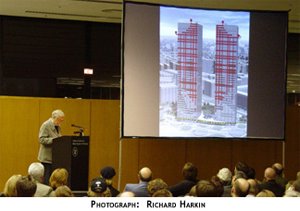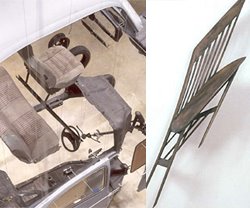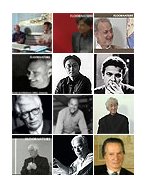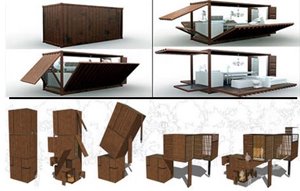New Years Resolutions -- Going Back to Our Roots
Kenneth Frampton: ...You know, I would like to say something that is a bit to one side of the project. It has to do with a predicament, and this is the polemical that we're talking about...
One of the things we face (and I don't just mean architects) is a rapidly escalating society, in many different levels, where the question of, “What has value other than money?" becomes very problematic. Different people have said things at different times. This might be too aphoristic, but I read just recently a remark about a great work about memory. Without memory probably it’s very difficult to sustain any kind of human culture. The question of "What does one do with memory?" You know? From what should value come in any kind of building operation? [...]
There is an aphorism by [Adolf] Loos that goes as follows, “There's no point in inventing anything unless it's an improvement.” It’s an ironic remark, but also a challenge to this moment in time, where everyone seems to be losing it.
Commerce will tell you that this is ridiculous from the point of view of architecture. Now you can say "Well I don't give a damn about commerce, this is an artistic work!" But Architecture is not in that; Architecture is not Fine Art in that sense. [Architecture] is a modus, which has to deal with certain kinds of reality. Its poetic comes through its transformation of reality. Which reminds me of Alvro Siza, in a sense Architects don't invent anything, they transform reality!
The question is, "What are the limits in which this transformation can take place?" You have to talk to society in some way -- in a way in which you can appeal to some kind of evident values. It can be money values, but also can, at the same time, can it be other values?
Otherwise it's like a conversation between the deaf and the dumb! There's no reason why we're to do anything! I could tell you to cut six more slots into this thing, and it wouldn't make a difference. It's a negative critique of the project, but it's also a critique of the whole goddamn situation.
You have to have a principle; otherwise you cannot communicate anything to anybody. Why should I invest my money in this, as opposed to some other project? You have to have a reason! Otherwise the architects don't even talk to the society! Don't you see that predicament?
These computer renderings produce aesthetic affects very well, seamless, very seductive, but they are not about anything. They are delusions! They are mirages! I'm sorry, it's very aggressive to say this, but aren't we going to start talking? It's just ridiculous to say, "Ok -- individual interpretations," "So on and so forth." One has to talk about something fundamental; otherwise we're never going to talk about anything anymore!
Demitri Porphyrios: I'm not sure what you're talking about.
Frampton: I'm talking about the fact that there is a total degeneration in the capacity to discuss anything...
Porphyrios: Do you want some coffee?
Frampton: No, I don't. Sorry, I don't...
[...]
Porphyrios: Look, look, look. This is a disgusting situation. It's not right to get upset...
Frampton: It's something to get upset about! I’m sorry there is. We always have polite discussions; we have to sometimes get upset, because otherwise we just don't talk about the things that matter.














